FAQs
Mike's very first article for the Retriever Journal, "The Right Start," will get you off on the right foot. You can view and print it right now. Later, you can decide if you want the article collections and the training videos.
The Basics provides a solid foundation for dogs destined to be field trial, hunt test, or hunting dogs. Likewise, the Transition is essential for dogs that will ultimately run blind retrieves, whether in the course of hunting or competition. It's in Advanced training that your training will differ depending on the goals you have for your dog.
The flow chart delineates some of the differences between hunting/hunt test and field trial training in Advanced training.
The program works well for all types of dogs. Mike's workshops have included conformation bred Labradors and Goldens, Flat Coated Retrievers, Curly Coated Retrievers, Tollers, Chesapeakes, and Poodles as well as field bred Labradors and Goldens. Temperaments of dogs that do well in the approach vary from very sensitive to bold and outgoing.
Many parts of the tapes either do not involve an e-collar or can be done without an e-collar. Indeed, the first several months of marking training all precede the introduction of the e-collar.
Much of the field training and yard drills could be done productively without the collar. However, the e-collar ultimately will enable you to refine your dog's training and gain greater reliability. You are likely to become more comfortable with the idea of using an e-collar when you see how it is very gradually introduced, and how it can be an integral part of a program that emphasizes communication and positive outcomes.
There are many terms and ideas that might be new to someone with no experience at all with field work. However, as you read the article collections and view the DVDs you are likely to very quickly pick up the terminology and ideas.
We kept the newcomer in mind as we produced the 2nd Edition of Total Retriever Training. The steps of the Basics are very clearly delineated.
This is a question that has confused even us. If you have a new pup, then Total Retriever Marking (TRM) is the first package to buy, as it shows you how to introduce your puppy to retrieving and how to progress through the field work that precedes formal Basic training. TRM starts you out right with your pup from age ten weeks.
How to introduce your new pup to bird boys; how to introduce to water work; mechanics of coming to line, whether to repeat marks or not, advantages and disadvantages of various kinds of marks, how to make your bird boy effective and useful, and many other pointers are sequentially presented. If you are experienced, it will still be a good choice since it provides you an overall developmental marking program that will help you through your dog's entire life.
However, the Transition and Advanced sections of TRM require a dog to have the foundation training that is described in Total Retriever Training (TRT). So if your dog is older and already progressing on marks, you might want to start with TRT.
Better yet, take advantage of our special offer and get both tapes together at a discount! Get Your Copy Today!
TRT only provides Field Checks for marking development and some marking development information. TRM provides step-by-step development of marking concepts from puppy to advanced marks. Duplication between TRT and TRM is only enough to make the connection between the concepts in the two packages.
The idea to produce Total E-Collar Conditioning (TEC) came from experiences at Mike's workshops and from monitoring discussions on internet forums. People were hesitant to get started with the e-collar because they were confused about the various methods advocated by different people, and they were reluctant to subject their dogs to training they weren't sure they understood.
A separate TEC video enabled us to show the complete details, and help people understand just how simple it can be to get their dog conditioned.
The article collections are an excellent source of information. People have different learning styles so the articles may be the best choice for those who like to learn by reading. The articles often delve in to details not present on the videos. However, actually seeing the timing and the communication with the dog is something difficult to convey with words, so we think you will ultimately want to view the videos as well.
